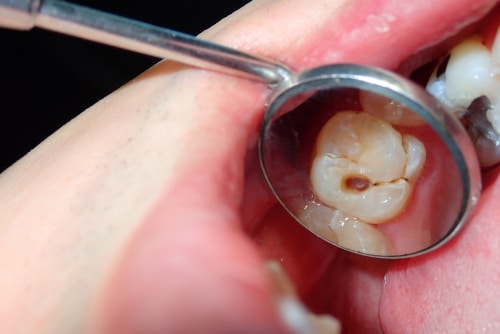Annually, more than three million people get diagnosed with a dental cavity in the United States. Researchers claim that most adults get a dental cavity during their lifetime. However, having a dental cavity implies that you will have to spend most of your time going through a painful toothache or being at the dentist’s office.
Nevertheless, people are always afraid of experiencing a cavity and receiving treatment if they have one. It is good to note that pain experienced as a result of a cavity depends on the severity. If the dentist discovers the cavity early, then you will need just a dental filling, and you are good to go. However, if the cavity is severe, then you might end up eradicating the infected tooth.
The Procedure of Dental Filling
During the filling process, the dentists starts by offering the patient an anesthetic to desensitize the afflicted area. This helps in reducing and eradicating pain involved during the process. To prevent contamination, the medical expert separates the tooth and keeps it dehydrated using a dental appliance or guard.
The dentists then eradicate the infected area using a drill, laser, or air abrasion. The instrument used depends on the location of the tooth or the depth of the cavity. After removing the decayed particulates, the dentists clean the tooth thoroughly to protect you from future tooth problems resulting from decay, bacteria, and debris.
The dentist then applies a filling material to the cleaned part, and uses light to season and cure the filling. After some time, the dentist then examines your bite to ensure that it has a smooth polish and that teeth are correctly aligned.
Types of Dental Fillings
Silver or Amalgam
This form of dental filling comprises a mixture of metals such as copper, tin, zinc, mercury, and silver. Although they are durable, the use of these fillers has brought about significant concerns due to the inclusion of mercury. Nevertheless, public health organizations such as the American Dental Association have claimed that amalgam is safe for use by consumers, as there is no proof that the mercury present can cause any harm to patients.
Gold
Gold is well-known for its strength and worthiness. Although gold fillings are durable compared to other types of filling, they are highly-priced and most insurance companies fail to pay for them. Another disadvantage of using gold filling is their visibility and their vulnerability to galvanic shock.
Composite
A composite filling contains a mixture of acrylic resin and powdered glass. These products take over other filling forms as they can take the color of your natural tooth, making them unobtrusive. However, the only limitation with this type of filler is that they are not as long-lasting as their alloy counterparts.
Ceramic
Ceramic fillings have the same benefit as composite fillings as they provide the patient with a natural appearance. However, they tend to be more expensive than composite and more fragile than other metal counterparts. Besides that, if you want to get a ceramic filling, you have to pay the dentist frequent visits as they are built in the lab.
Generally, there are various types of dental fillings to consider if you have a dental cavity. However, before choosing a tooth filling, it’s good to talk to a dentist to know the filling that will suit you best.
